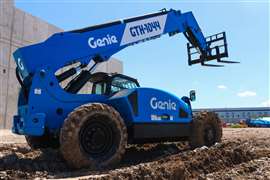Crumbling UK hospitals highlight problems with reinforced autoclaved aerated concrete
01 August 2023
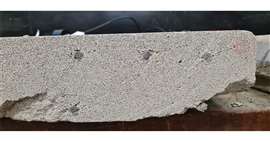 A RAAC panel in cross section (Image supplied by Loughborough University)
A RAAC panel in cross section (Image supplied by Loughborough University)
It was once regarded as an innovative, low-cost, lightweight building product that could be precast offsite and used to speed up the construction of buildings like schools and hospitals.
But reinforced autoclaved aerated concrete (RAAC) is now proving to be a headache for the owners of some of those buildings, which require costly interventions and even wholesale reconstruction.
A recent report by the UK’s spending watchdog, the National Audit Office (NAO) has highlighted the cost and complexity involved in dealing with RAAC.
The government there has committed to completely rebuild seven ‘structurally unsound’ hospitals built with RAAC that are now in urgent need of replacement, as part of a wider hospital building programme in England. Each hospital is expected to cost in the region of £1 billion (US$1.3 billion).
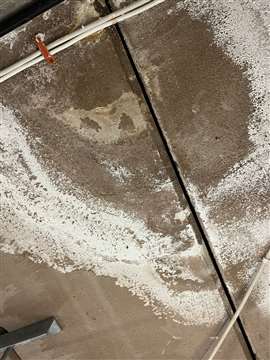 An RAAC panel damaged by water (Image courtesy of Prof Chris Gorse)
An RAAC panel damaged by water (Image courtesy of Prof Chris Gorse)
In the meantime, the UK’s government also plans eradicate RAAC from the estate of the National Health Service (NHS) in England by 2035 and allocated £685 million over five years to mitigate immediate safety risks.
Tens of thousands of RAAC panels are thought to exist in buildings across the UK, many constructed in the 1960s and 1970s, although RAAC is known to have been used from as early as the 1950s, up until the 1980s, mostly in walls and roofs in the UK.
Manufacturing in the UK stopped at some point in the 1980s and although it is not clear exactly why, researchers believed that it was recognised that the material could be prone to problems.
However, RAAC wasn’t just used in the UK. It was also popular in Ireland, Australia, New Zealand and South Africa from the 1950s to the 1980s.
Some of those panels, particularly those that were poorly manufactured, installed, or maintained, have now started to reach the end of their lives and have started a process of deterioration.
When RAAC panels do fail, they can do so without warning. The roof of a UK primary school collapsed in 2018, fortunately on a weekend and without any casualties, prompting a 2019 safety alert over the material.
Updated this year, it details how RAAC has shown low strengths following water ingress, which can be linked to poor maintenance, especially in flat roofs, as well as the misplacement of reinforcement bars and/or insufficient end bearings.
Professor Chris Goodier, an expert in construction engineering and materials at the University of Loughborough, is part of a team leading a major research project on RAAC funded by the NHS and advises several other major government departments.
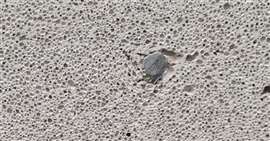 A RAAC panel in cross section (Image supplied by Loughborough University)
A RAAC panel in cross section (Image supplied by Loughborough University)
“RAAC is an aerated lightweight cementitious material with no coarse aggregate; the material properties and structural behaviour differs significantly from ‘traditional’ reinforced concrete,” he says.
“It is essential that those responsible for the management, maintenance or alteration of buildings know whether their buildings contain RAAC, and if they do not know, they should seek appropriate expert advice. If not properly managed, RAAC planks are structural building components with safety implications,” he adds.
RAAC is still manufactured and installed all over the world and Goodier maintains that it can still be an appropriate construction material, so long as it is properly designed, manufactured, installed and maintained.
“Our research has shown, however, that this is often not the case for RAAC panels constructed in the 1950s, ‘60s, and ‘70s,” he says.
And it is unlikely that RAAC manufactured in countries other than UK will be without similar problems.
Goodier’s colleague at Loughborough University is Chris Gorse, professor of construction engineering and management. He is also working on the NHS cross-government programme of research into RAAC plank performance.
“We have found problems with RAAC’s manufactured during the 1950s, 1960s and 1970s. I suspect that that inconsistency in manufacturing may have been replicated overseas,” Gorse tells International Construction.
Inspection needed
Gorse points out that RAAC, when manufactured, installed and maintained properly, still performs well. “We haven’t tested an existing panel, even when it has been in service for a time and where it has got adequate end bearings, that has failed below its design strength,” he says.
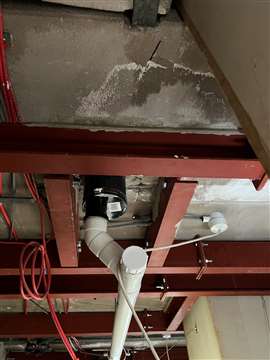 Remedial supports in place where there is a service penetration (Image courtesy of Prof. Chris Gorse)
Remedial supports in place where there is a service penetration (Image courtesy of Prof. Chris Gorse)
But that is part of the reason why inspection of RAAC, before deciding on whether RAAC needs to be remediated or in some cases even replaced, is so important.
“I think RAAC, during its manufacture and assembly was probably more exposed to abuse,” Gorse says. “The presence of water does change its behaviour, as well as leading to corrosion and potentially spalling of the concrete. But it is also based on the way it was manufactured, whether the steel reinforcements were in the right place, and whether it has been exposed to greater loads than it should have been.”
He also points out that because the aerated concrete is easier to penetrate than traditional forms of concrete, that has resulted in people cutting holes into it or knocking things through it, which again affects its performance in situ.
“The important thing with all RAAC buildings is that they are inspected to ensure that RAAC panels are in good condition and that they have adequate end bearings,” Gorse says.
Guidance from the Institution of Structural Engineer Engineers (iStructE) is currently that RAAC panels should have end bearings of 75mm, although they were originally designed to have shorter bearings of between 45mm and 60mm.
“It needs an adequate bearing and if you increase the width of that bearing then the risks are substantially reduced,” says Gorse. “Where you have floors and roofs that are slightly short of that bearing, there are remedial measures you can put in place with sufficient support to increase the bearing at the ends and then the panels should perform.”
He hopes that means that full reconstruction of buildings containing RAAC won’t always been necessary, although the NHS is being “rightly cautious”.
Better maintenance
Gorse also called for better maintenance of buildings, highlighting both the Grenfell Tower disaster and the problems with RAAC as examples of where the industry has fallen short.
“We’ve got to get better at managing building assets and making sure that we don’t just build buildings but we maintain and operate them correctly” he says. “This is a bit of a wake-up call.”
Meanwhile, the work to understand RAAC’s performance continues. “We are still doing a lot of research on RAAC. That’s a lot to learn and we are generating new models, testing beams of different ages, and there is likely to be more information coming out on its performance in the future,” Gorse concludes.
Cost of temporary safety measures
The NAO’s report highlighted the case of one UK health facility, West Suffolk Hospital, where installing temporary safety measures to mitigate against the risks posed by its crumbling RAAC will cost £65 million ($85 million).
The construction of the building involved extensive use of RAAC beams in the ceilings and RAAC panels in the walls. The NHS trust managing the hospital has been aware of a problem with the RAAC since 2010 and has monitored the concrete as well as taking measures to strengthen it. But even with additional support, it can’t rule out the possibility of collapse. As a result, the trust in charge has also had to install fail-safe devices to minimise the impact of a collapse on patients and staff.
The trust estimates that over the four years from 2021-2022 to 2024-25, it will have spent £65 million on RAAC-related maintenance. The hospital requires complete reconstruction on an adjacent site. The existing building containing RAAC will be demolished.
Estimated cost of rebuilding England’s RAAC hospitals
- James Paget University Hospital, Norfolk: £1 billion - £2 billion ($1.3 billion - $2.6 billion)
- West Suffolk Hospital, Suffolk: £501 million - £1 billion ($654 million - $2 billion)
- Frimley Park Hospital, Surrey: £500 million - £1.5 billion ($654 million - $2 billion)
- Airedale General Hospital, Keighley: £500 million - £1.5 billion ($654 million - $2 billion)
- Hinchingbrooke Hospital, Cambridgeshire: £500 million - £1.5 billion ($654 million - $2 billion)
- Leighton Hospital, Cheshire: £500 million - £1.5 billion ($654 million - $2 billion)
- The Queen Elizabeth Hospital, King’s Lynn: £500 million - £1.5 billion ($654 million - $2 billion)
STAY CONNECTED


Receive the information you need when you need it through our world-leading magazines, newsletters and daily briefings.
CONNECT WITH THE TEAM









